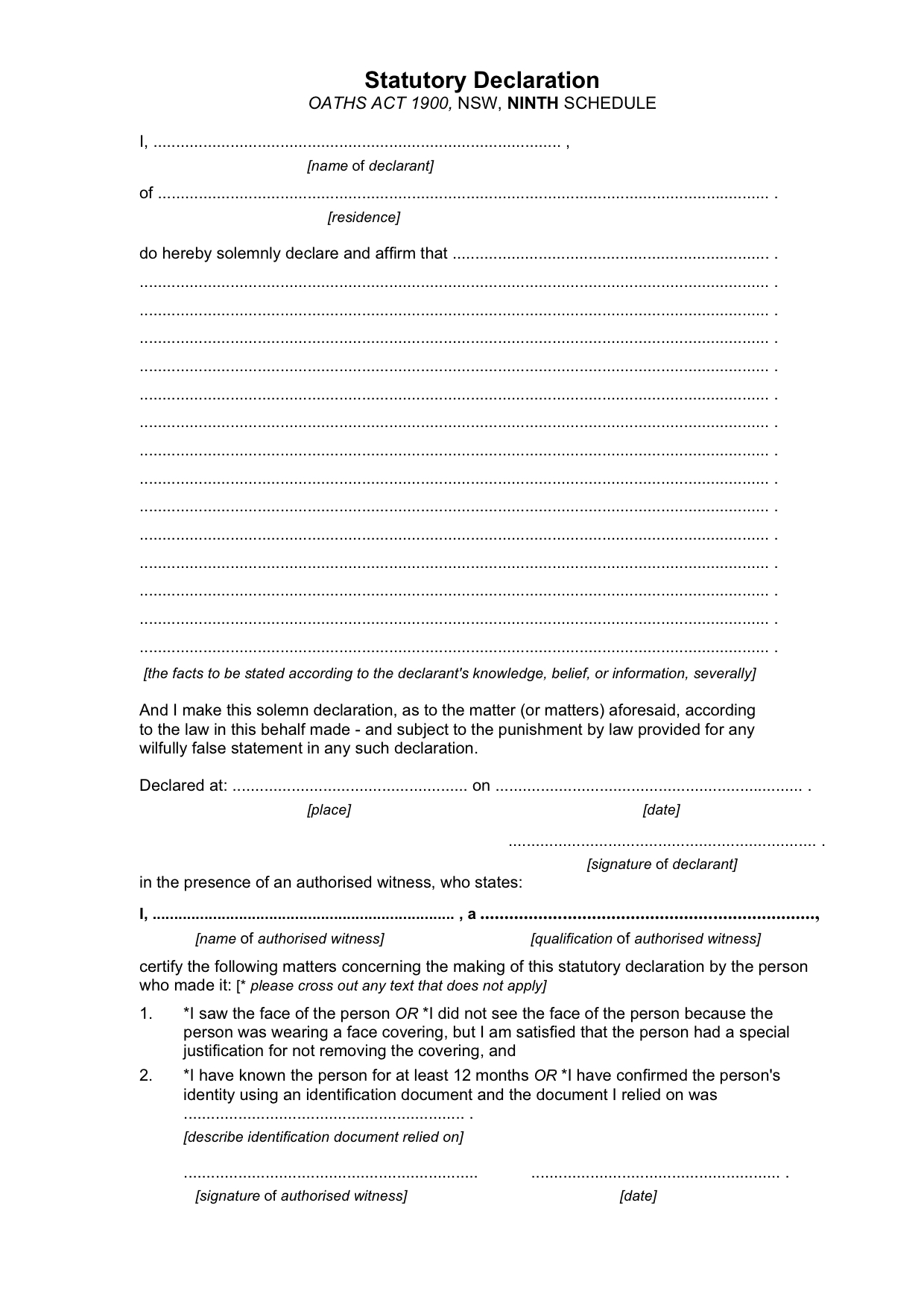 A Statutory Declaration is a legal document that allows you to declare something to be true. In New South Wales, there are a number of situations where you may need to know how to fill a Statutory Declaration form. For example, if you need to establish a change of name (eg following marriage, divorce, commencement or cessation of a de facto relationship, etc.) on a government document, if you need to prove your identity where your identity documents are insufficient, or many others.
A Statutory Declaration is a legal document that allows you to declare something to be true. In New South Wales, there are a number of situations where you may need to know how to fill a Statutory Declaration form. For example, if you need to establish a change of name (eg following marriage, divorce, commencement or cessation of a de facto relationship, etc.) on a government document, if you need to prove your identity where your identity documents are insufficient, or many others.
There are a few things you need to know before you start filling out a Statutory Declaration form in NSW. First, the form must be filled out in English. Second, the declaration must be made in front of an authorised witness, such as a Justice of the Peace (JP) or a solicitor. Finally, the person making the declaration must sign the form in front of the witness.
How to Fill a Statutory Declaration Form
 If you need to make a statutory declaration in NSW, you must use the statutory declaration form that is prescribed by the state government. This form can be obtained from a Justice of the Peace, a lawyer, or a Court, often at Australia Post outlets, and can also be found online.
If you need to make a statutory declaration in NSW, you must use the statutory declaration form that is prescribed by the state government. This form can be obtained from a Justice of the Peace, a lawyer, or a Court, often at Australia Post outlets, and can also be found online.
When filling out the statutory declaration form, you will need to provide your personal details, as well as the statement that you are declaring to be true. Once you have signed the form, it must be witnessed by an authorised witness, usually a Justice of the Peace, or a Solicitor.
Step by Step Guide to Filling in a Statutory Declaration Form
Here is a step-by-step guide on how to fill a Statutory Declaration form in NSW:
- Read the form carefully before you start filling it out.
- Make sure you understand what you need to declare.
- Check that the form should contain the words: “and I make this solemn declaration conscientiously believing the same to be true, and by virtue of the provisions of the Oaths Act 1900.” There is an alternate form of wording, but it is less often used. Either way, the form must comply with either Schedule 8 or Schedule 9 of the Oaths Act.
- Fill in your personal details – your full name, your address, and possibly your occupation or your date of birth.
- State clearly and succinctly what you are declaring to be true. It is good to use numbered paragraphs.
- Sign the form in front of the authorised witness. The witness must actually see you sign the form.
- Provide your ID document to the authorised witness (driver’s licence, passport, or other identifying document). If the witness has personally known you for more than 12 months, this step is not necessary.
- I f any errors or changes have been made to the document, those changes should be initialed alongside the error in the margin.
- The witness must also sign the form. The witness must also provide their personal details including their name, address and occupation, and if the witness is a Justice of the Peace (JP), they must also provide their identification reference number.
- It is good practise to make and keep a copy of the completed form for your records.
- Once the form has been completed, it can be provided to, and relied upon by, whomever has asked for the Statutory Declaration from you.
Giving Incorrect Information in a Statutory Declaration Form
It is important to note that making a false statutory declaration is a serious offence, and can result in a prison sentence of up to five years. If you are unsure about anything on the form, or have any questions about making a statutory declaration, you should seek legal advice.
Final Notes on How to Fill a Statutory Declaration Form
For further information on how to write a Statutory Declaration, as well as more information on the formal requirements for Statutory Declarations, click here.
A Statutory Declaration Form is an important method of providing evidence. It is therefore essential to ensure that the form is filled out correctly. If you have any questions about how to fill out a Statutory Declaration Form, you should seek legal advice.


